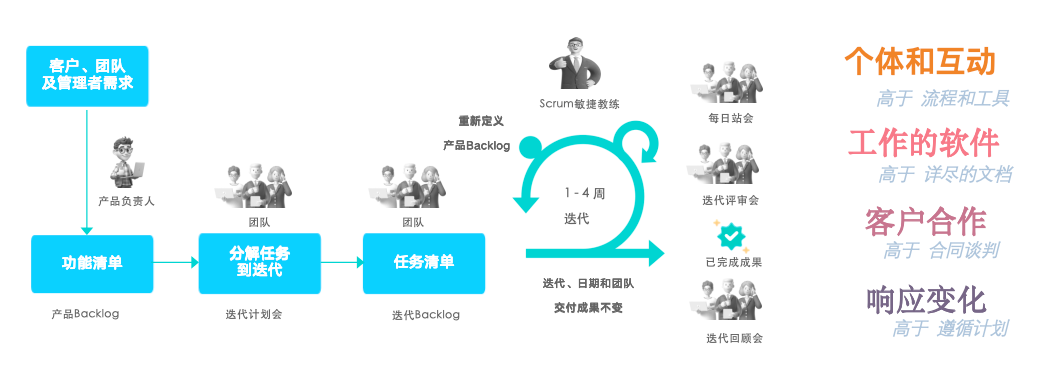Introduction to Agile Development
AngusTester is a research and testing management tool specifically designed for agile development teams, aiming to enhance team efficiency and software quality.
In addition to providing traditional task board functionality, AngusTester particularly supports the Scrum framework through a series of integrated features that help teams effectively manage testing processes during rapid iterations and achieve continuous delivery.
💡 Objective of This Article
This article aims to help you quickly understand the core framework of agile development—Scrum, including its key roles, critical processes, and common terminology.
Whether you're new to agile development or looking to reinforce your knowledge, this article provides a clear guide.
What is Scrum?
Scrum is an agile development framework widely used in software development. It helps teams respond quickly to changes and deliver high-quality products continuously through short-cycle iterations (called Sprints) and incremental delivery. Scrum emphasizes teamwork, adaptability, and continuous improvement.

Scrum Flow Diagram: Illustrates the basic Scrum process, including key events such as iteration planning, daily standups, iteration reviews, and retrospectives.
The Three Core Roles in Scrum
In a Scrum team, there are three core roles, each with distinct responsibilities that collectively drive project success:
| Role | Responsibilities | Key Tasks |
|---|---|---|
| Product Owner (PO) | Represents product requirements and business value |
|
| Scrum Master | Ensures the team executes Scrum processes efficiently |
|
| Development Team | Responsible for delivering product increments |
|
The Five Core Scrum Events
Scrum ensures team rhythm and transparency through a series of fixed events (meetings). These events are time-boxed to maintain efficiency:
🔄 1. Sprint
- Duration: Fixed 1-4 week cycle, non-interruptible
- Goal: Deliver a working product increment
📅 2. Sprint Planning Meeting
- Timing: Held before the Sprint begins
- Participants: The entire Scrum team
- Purpose: Determine the work to be completed in the Sprint, forming the Sprint Backlog
🎯 3. Daily Standup
- Timing: Daily at a fixed time, no longer than 15 minutes
- Purpose: Synchronize progress and identify obstacles
- Classic Three Questions:
1. What did I complete yesterday?
2. What will I work on today?
3. What obstacles are in my way?
🚀 4. Sprint Review Meeting
- Timing: Held at the end of the Sprint
- Participants: Scrum team and stakeholders
- Purpose: Showcase the Sprint's deliverables and gather feedback
🔁 5. Sprint Retrospective Meeting
- Timing: Conducted after the review meeting
- Participants: Scrum team
- Purpose: Reflect on lessons learned and plan improvements for the next Sprint
The Five Core Values of Scrum
Successful implementation of Scrum relies on shared team values, which form the foundation of collaboration:
💡 Core Values
- Commitment: Taking responsibility for team goals and delivering on promises
- Courage: Facing challenges and uncertainties bravely
- Focus: Concentrating on completing the current Sprint's work
- Openness: Maintaining transparency and sharing information and feedback
- Respect: Valuing each team member's abilities and contributions
Quick Reference Glossary
| Term | Definition |
|---|---|
| Scrum | An agile framework for managing and completing complex product development |
| Sprint | A fixed 1-4 week work cycle where the team completes a set of tasks and delivers a product increment |
| Product Backlog | A dynamic, prioritized list of product requirements |
| Sprint Backlog | The list of tasks the team commits to completing in a single Sprint |
| Increment | The sum of usable product features delivered at the end of each Sprint |
| User Story | A concise format for describing user needs: "As a [user role], I want [feature] so that [value]" |
| Stakeholder | Individuals with an interest in or influence over the project (e.g., clients, users, management) |